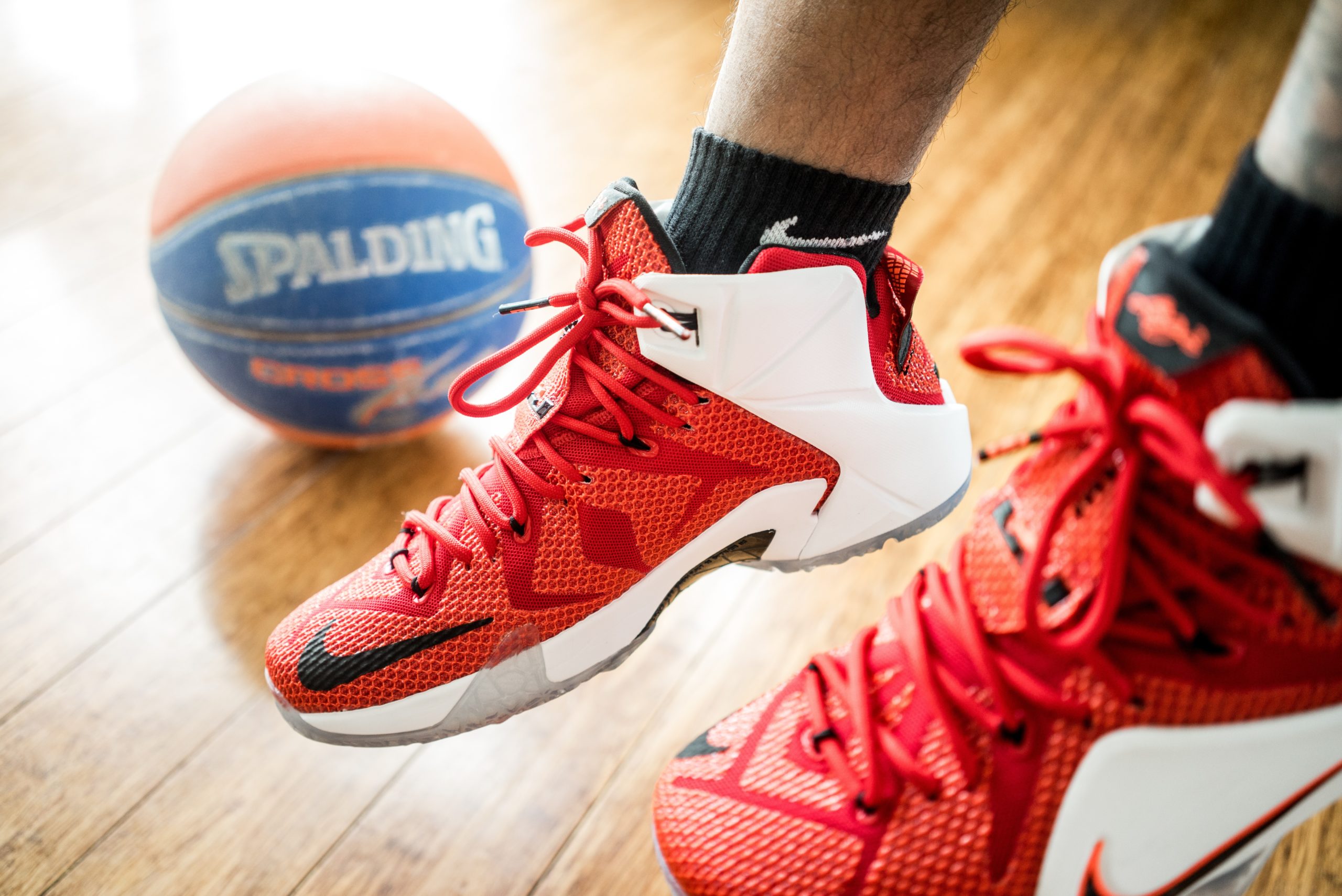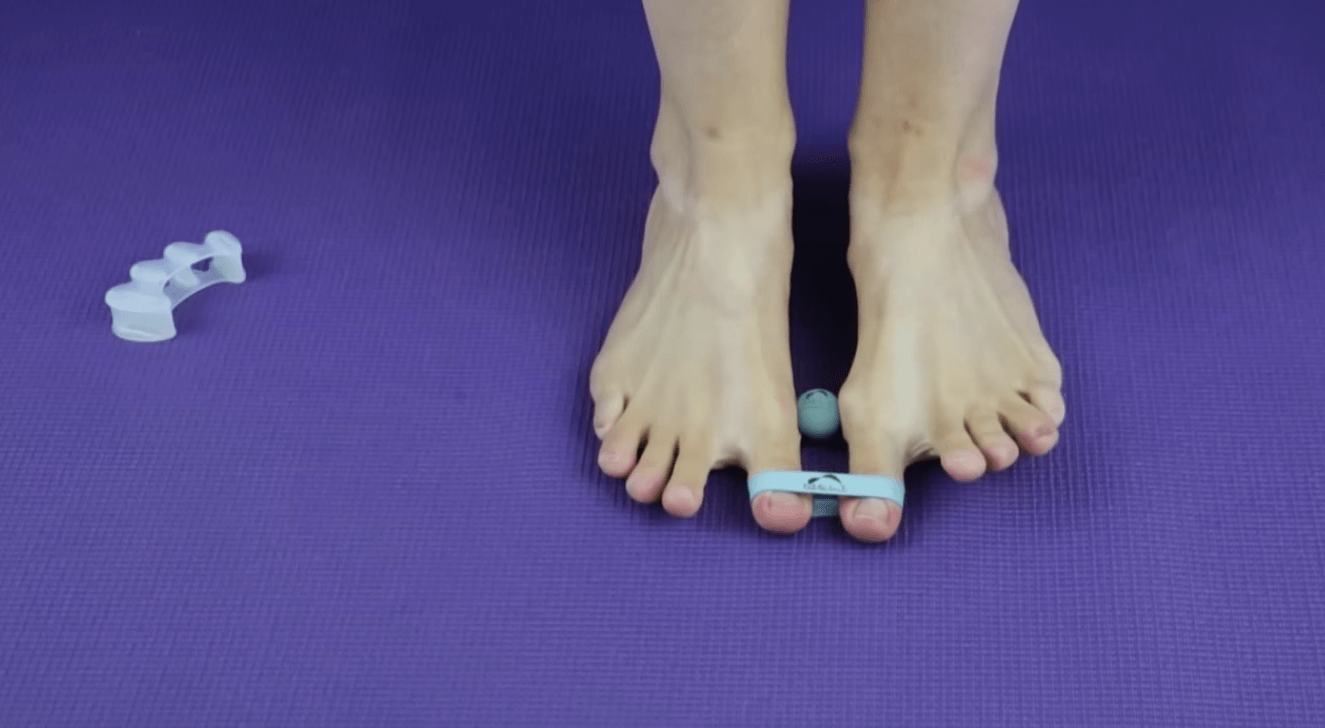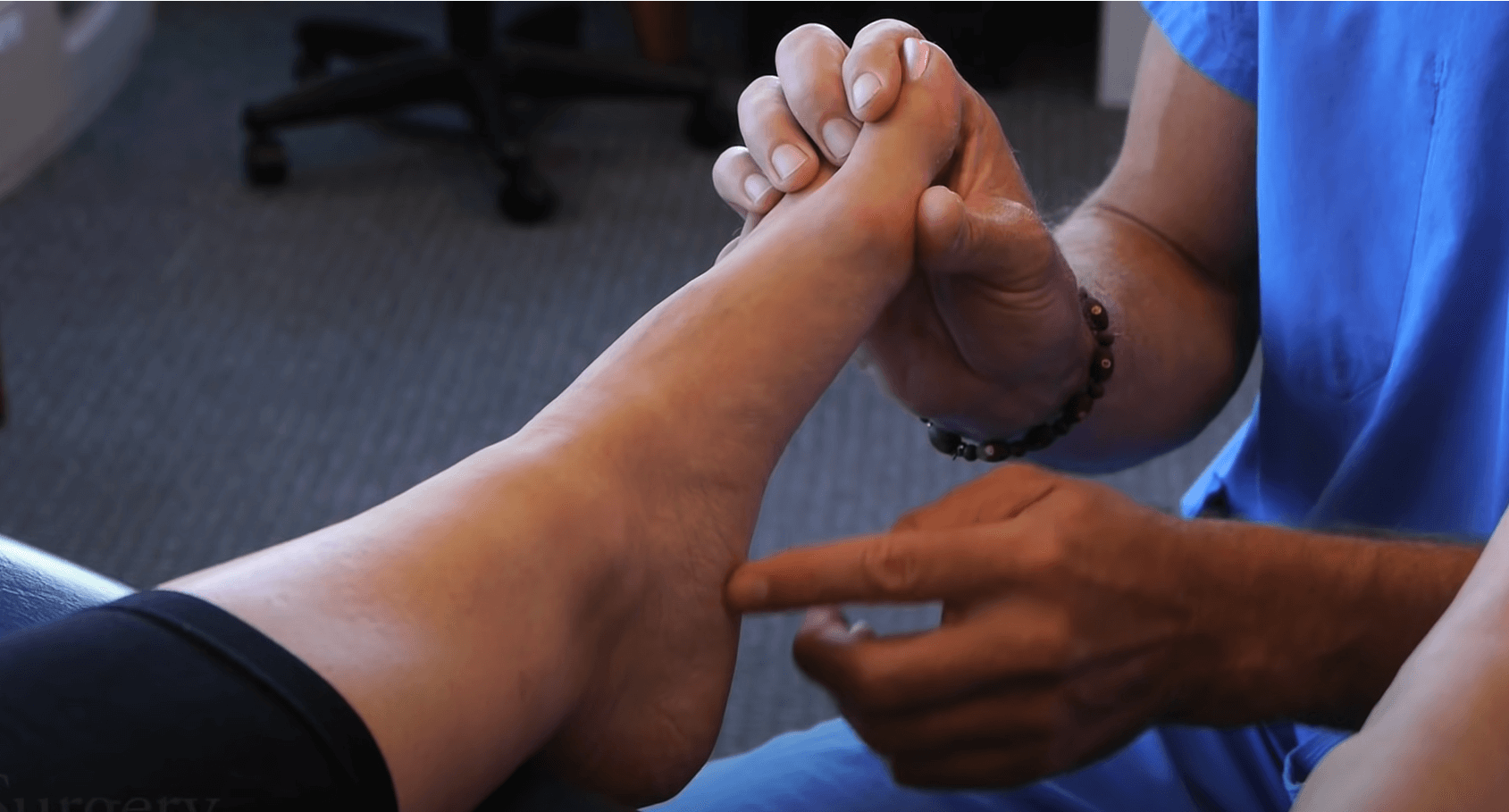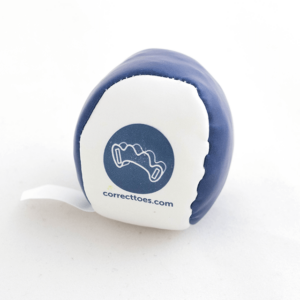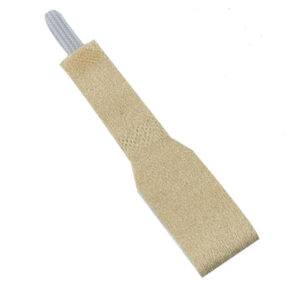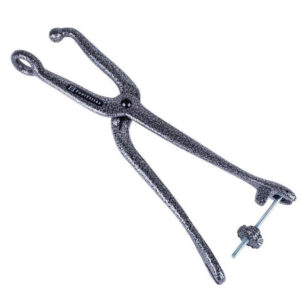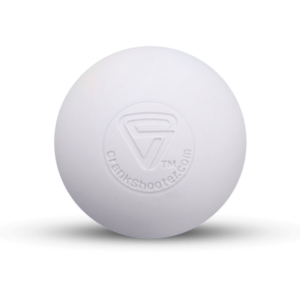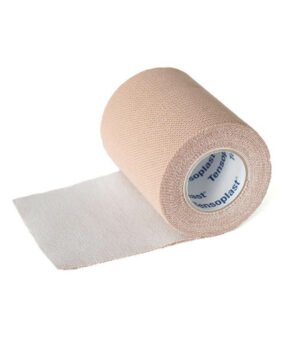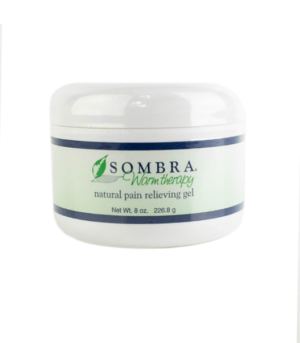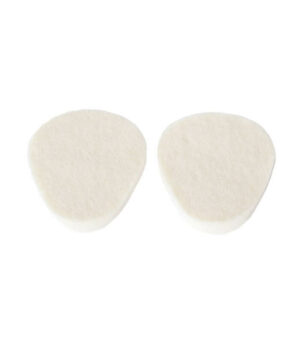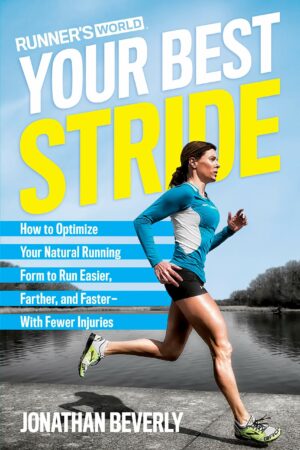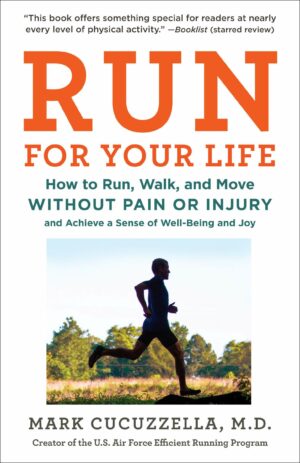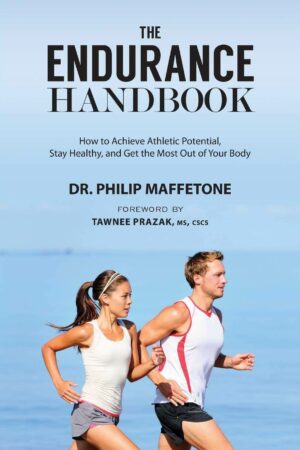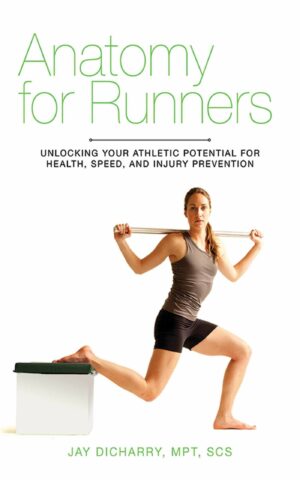A common question we get at Correct Toes is: which naturally shaped, minimalist, barefoot-style shoes do we recommend for basketball and court sports? This is admittedly a tough question, although we are determined to do our best to present you with a well-thought out answer. The shoe companies we love that feature wide toe boxes and flat, flexible soles have yet to make a basketball shoe, and the major basketball shoe companies have yet to make a foot-healthy, minimalist shoe; so as much as this blog post is informational and educational, it is also a call to all shoe companies to make a natural, minimal, foot-shaped basketball shoe without all the extra bells and whistles.
What to Look for in a Healthier Basketball Shoe
Basketball shoes are designed by product developers with art degrees and product design backgrounds, not by health and fitness professionals. Athletic shoes are developed to meet fashion and aesthetic standards; foot health is not a priority. Here is a video from 2015 by Correct Toes founder, Dr. Ray McClanahan, DPM, discussing the problematic and injurious shoe features of conventional basketball shoes.
Basketball is a sport of jumping, landing, sprinting, lateral movements, and sudden cutting, stops, and starts, which are some harsh and taxing forces to impose on the feet and shoes. Unfortunately, the features of minimal and natural footwear are, at times, at odds with the perceived required features of quality basketball shoes. With that in mind, here are some things to think about when looking for a foot-healthy basketball shoe.

Wide Toe Box
The human foot is designed to have the toes wider than the ball of the foot. This is important for balance, jumping, and propulsion, as well as proper structural alignment, blood flow, and nerve function within the foot. Most basketball players’ toes are squeezed inwards, narrower than the ball of the foot, forming a bunion and tailor’s bunion, and limiting the range of motion of the toes. This takes away the athlete’s stability, arch strength, and even the possibility of preventing or mitigating an ankle sprain. Wide, splayed toes help to prevent excess eversion and inversion of the ankle. Additionally, the friction from a narrow toe box constantly rubbing on the toes can cause blisters, corns, calluses, and ingrown toenails. Imagine what the difference in shooting and dribbling a basketball might be if your fingers were bound and squeezed together like toes are in conventional basketball shoes, yikes! Avoid tapered toe boxes and seek a shoe that lets your toes function as they should; unlock the full potential of your toes!
- Note: For additional assistance realigning your toes and restoring their function, undoing the damage of long-term tapered toe boxes, consider using our anatomical toe spacer Correct Toes, which is made to be worn while active, within Correct Toes Approved™ shoes. Several teams from the NBA, NFL, and NCAA use and love Correct Toes for injury prevention and rehabilitation. See this article regarding Correct Toes and Basketball.
Minimal Heel Elevation
Heel elevation, which shifts the athletes’ body weight and center of mass forward, results in a predictable compensation from the ankles, knees, pelvis, and spine to recapture balance and alignment. This puts extra stress on these joints, commonly resulting in pain and weakness of the knees and low back. At the ankle, a heel elevation causes the lower leg bones (tibia and fibula) to sit further back on the posterior part of the ankle bone (talus), where it is narrower; this position is much less stable and thus increases the chances for an ankle injury. A heel elevation will also shift your body weight onto the balls of your feet, potentially resulting in capsulitis and calluses. Chronic heel elevation, over time, shortens the calf muscles by up to 13%, stiffens and weakens the Achilles tendon, which pulls on the plantar fascia. This means less contractility of the calf muscles and Achilles tendon, reduced jumping ability, and increased strain on the posterior lower leg muscles and tendons, as well as potentially painful plantar fasciosis. Another significant and potentially debilitating effect of heel elevation is that there is an involuntary stretch reflex built into the posterior lower leg that can only be activated if the heel is allowed to come close to the ground. This does not occur in most shoes available to consumers today, even amongst athletic shoes. The problem here is that activation of that involuntary reflex is something that should happen with every step to help our forefoot with its most important task of propulsion. Shoes with elevated heels “steal” much of this propulsive power from the tendon and leg muscles.; power that must be borrowed from elsewhere – namely the knees, thigh muscles, hips, and trunk.
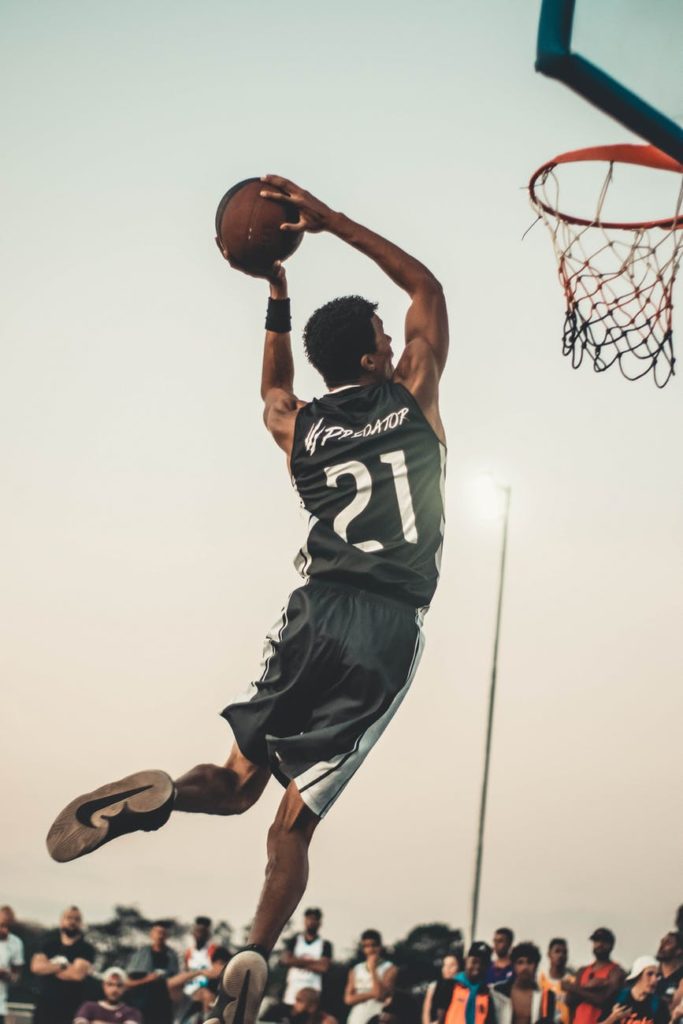
Minimal, Flexible Toe Spring
Most shoes have 15-20 degrees of toe spring. There is no physiological benefit of this shoe feature, which actually destabilizes the foot. The toes operate on a system of balanced pulling, with extensor tendons on the top of the foot and flexor tendons on the bottom, which becomes unbalanced when the basketball players’ toes are chronically elevated into extension by a rigid toe spring. Beyond reducing balance and stability, this can lead to hammer toes, plantar fascia pain, shin splints, capsulitis, calluses, and neuromas. Good foot health for athletics requires that the toes be able to flex and extend freely, gripping the ground for speed and agility. Most basketball players know for optimal precision and control, you shoot and dribble the ball with your fingertips; those same principles apply to the toes for optimal athletic performance.
No Arch Support or Motion Control Features
Whether its architecture and bridges or the human foot, strong arches are the same: they support weight over an open space by providing support on either end of that open space, not by propping it up in the middle. An athlete needs their arches to be strong and to act like a natural spring. Arch mobility and strength contribute significantly to acceleration, balance, speed, and strength. Artificial arch support restricts that spring-like function and acts like a cast. This lack of movement keeps your feet from working under their own natural power. These now weaker muscles lack stamina and tire at an accelerated rate. As an athlete trying to get faster or perform longer, results are influenced by the strength of your foot. Arch support features built into shoes weaken the foot muscles, leaving the athlete more prone to injuries. Arch support also encourages improper alignment and weight distribution, having a negative effect on athletic performance and endurance.
Make Sure the Shoe Fits
A shoe that is too small squeezes the foot and toes, acting like a cast, which leads to weakness and deformities. A shoe that is too big allows the foot to slide around without stability, causing blisters and injury. The shoe liner test is a great way to see if a shoe fits well before purchase. Pull the shoe liner out of the shoe and stand on it (preferably with a pair of Correct Toes on); if your toes fall off the liner to either side, that shoe is likely too narrow. Additionally, shoe modifications can be made to help tailor a better custom fit. If the shoe is just a little too small, consider removing the shoe liner, expanding the forefoot by starting the laces one eyelet back, or even cutting slits into the sides and the top of the toe box to allow for more room for splayed toes. If the shoes are a little loose, consider lacing the shoes up with the runner’s tie to have a little more support in the heel area to keep the foot from slipping around too much.
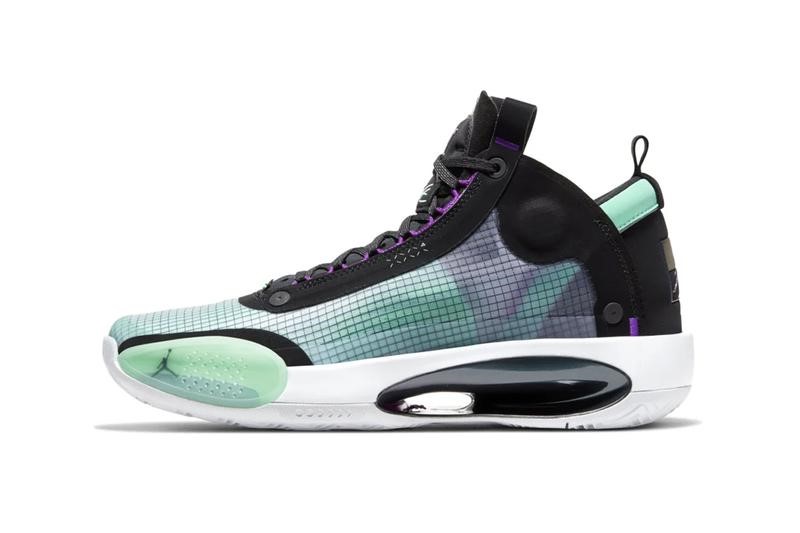
What about cushioning?
Most athletic shoes, basketball shoes in particular, are loaded with excess cushioning to help with comfort and to buffer the forces our bodies incur during athletic endeavors. However, all that extra cushioning, as comfortable as it is, may not be as beneficial as it may seem. In fact, the more cushioning a shoe possesses, the harder and more damaging on our joints it may be. Cushioning makes us think we’re reducing joint impact because it feels that way, but in fact it’s just reducing the sensation of the impact. For more in-depth analysis regarding the shoe cushioning myth, check out this article from our friends over at Natural Footgear, who helped to provide much of the information on this subject.
When running in minimalist footwear, we tend to change our gait and make the foot strike happen more underneath our bodies instead of out front. So, instead of landing hard on the heel like we do in cushioned shoes, we control the impact better in minimalist shoes, more evenly distributing forces between the lower extremity joints, and thereby reducing the overall force on our feet and bodies. When we fail to place our feet just right, our weight distribution gets thrown off. The heels, toes, and arches are not able to properly absorb impact and distribute body weight. This can have negative implications for our feet, ankles, knees, and back. By contrast, when we’re wearing only thin-soled, flexible footwear, our feet and bodies can feel everything about the ground and what’s happening in our lower extremities. After initially transitioning to minimalist and natural shoes, landing on the heel can be painful and may result in larger than necessary collision forces. What tends to happen in people who adopt minimalist footwear is that, over time, they will actually develop the ability to move in a less jarring way. For more information on the science behind barefoot running and foot striking, check out the work by Daniel E. Lieberman at Harvard University.
Another aspect of shoe cushioning that’s often overlooked is the fact that cushioned soles actually force us to do more work with each step. The greater the cushioning in a given shoe, the less efficiently force is transferred between the foot and the ground. Energy that would otherwise go into propulsion is dispersed throughout the shoe’s padding and wasted. In people who wear minimalist footwear, a maximum amount of propulsive energy is transferred between the foot and the ground, and considerably less energy is wasted with each step or stride.
Correct Toes Suggested Basketball Shoes
Most of these shoes have the features Correct Toes loves: lightweight, a wide, foot-shaped toe box, and a flat, flexible sole without heel elevation, toe spring, or arch support; however, some of these shoes may also lack the additional performance features useful for basketball such as reinforced tread outsole wrapping up the sides of the shoe (though even Nike has problems with that, just ask Zion Williamson).
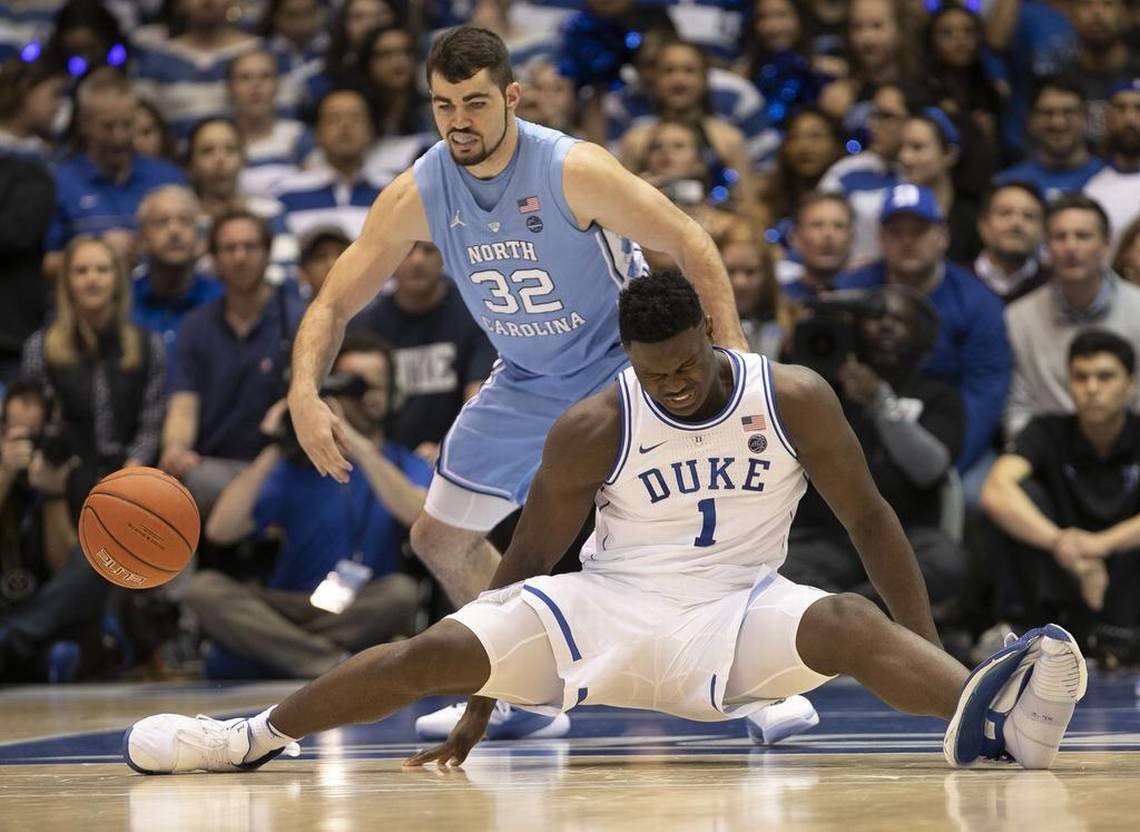
None of the following companies make shoes specific for basketball (yet), and only some have shoes that are specific for gym and cross-training. These types of minimalist athletic shoes might see faster breakdown from long-term lateral use with tearing in the shoe upper from the outsole. As always, if you don’t regularly wear minimalist and natural footwear, be sure to transition slowly. Before you jump all the way in, read this article on transitioning to natural shoes. First wear the natural footwear casually, increasing by 30 minutes per day as you feel comfortable. Allow ample time for adjustments and gait changes. Once you are comfortable wearing natural footwear casually, try some light exercising such as weightlifting and eventually running, before very slowly progressing towards basketball and other court sports. If you make this transition too quickly, especially while being active, you can significantly increase your chances of injury, so be sure to take it slow. Your feet need time to adjust and strengthen. If you have already transitioned to wearing mostly minimal and natural footwear and are looking to try a foot-healthy shoe to play basketball and other court sports in, after speaking with representatives from the following companies, these athletic shoes are the ones we recommend.
Disclaimer: The shoes listed below are considered to be healthy athletic shoes but are not ideal for basketball. Basketball requires a lot of athletic, agile, and aggressive movements that are not really what we would consider to be basic human movements, such as running. Additionally, basketball is played on an artificial surface, so barefoot principles are not always ideal. Playing basketball in running shoes is not ideal either, for similar reasons. We generally advise patients to wear basketball shoes that are as wide and low as they can find, and wear healthy, natural, minimalist shoes all the other times. Overall, basketball doesn’t take up too much time for most people and sometimes we must compromise, just like wearing dress shoes for special occasions.
Altra
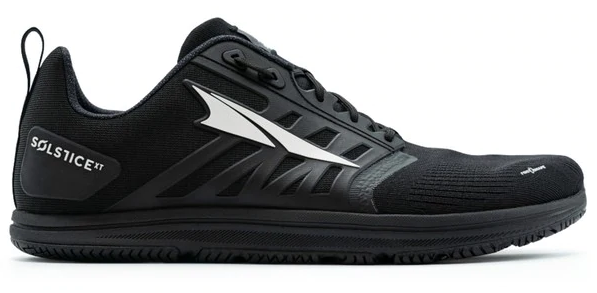
- – The Solstice XT is a new cross-trainer recommended by Altra. Whether you’re going to the gym, out for a run, or for a casual walk around town, the Solstice can be your go-to all-around sneaker. This shoe combines an engineered mesh durable caged upper for improved performance with a durable 23 mm full rubber outsole. The Solstice XT features Altra’s signature FootShape™ toe box, which allows for a wide and natural toe splay, and Innerflex™ midsole that provides grid-like grooves to allow your foot to flex while being lighter, for more speed and better performance. The Zero Drop™ platform and balanced cushioning places your heel and forefoot the same distance from the ground to encourage proper, low-impact form throughout your athletic endeavors. This is our top-rated Correct Toes Approved™ shoe for indoor basketball.
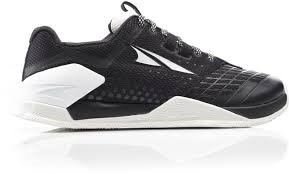
- – The HIIT XT 2 is a cross-trainer shoe that features a FootShape™ toe box, which accommodates Correct Toes, the Zero Drop™ platform, which offers a flat, stable surface to move from, and the removable insole adjusts the stack height from 20 mm to 15 mm. The biggest downside to this shoe is the stiffness of the sole so removing the liner is a good option. The reinforced mesh upper and sticky rubber outsole combine to create a durable shoe with great traction. The HIIT XT 2 performs well during multi-directional, dynamic workouts. Please see our shoe review.
Topo Athletic
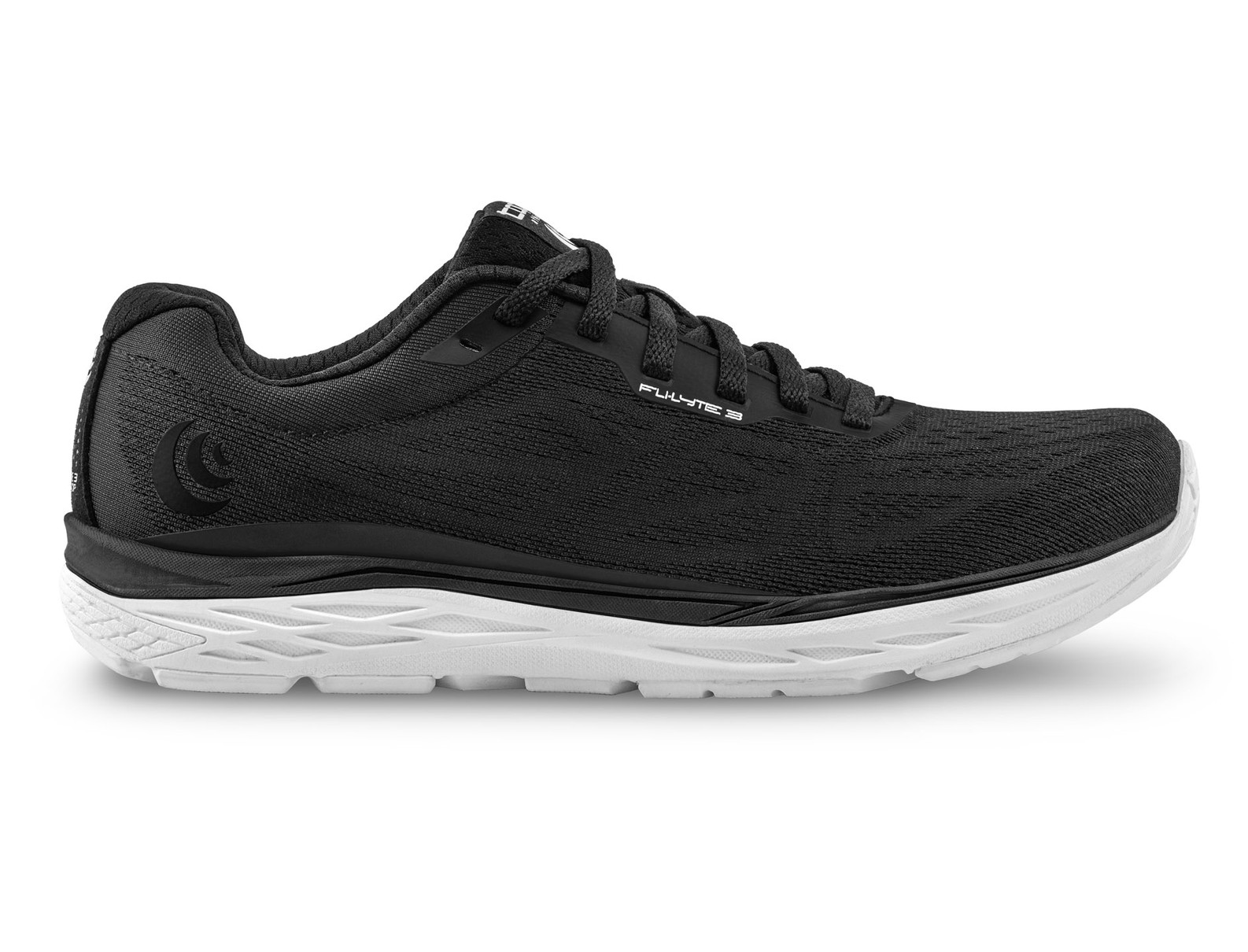
- – The Fli-Lyte 3 features a 23 mm X 20 mm stack height offering cushioning without losing flexibility and ground feel for a more natural running experience. The Fli-Lyte 3 eliminated almost all printed overlays to make it lighter and more breathable using a new engineered mesh upper to secure the foot over the platform, however this may leave the shoe more susceptible to breakdown during lateral movements. The 5 mm anti-microbial Ortholite® footbed gives the shoe a softer ride without sacrificing midsole response. Please see our shoe review.
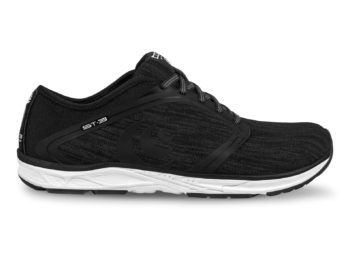
- – The ST-3 is Topo’s most recommended shoe for the gym because of its lightweight flexibility and low profile. The ST-3 features a knit upper mesh pattern with fewer printed overlays, which may make the shoe less durable during lateral movements. The 16mm, zero drop platform, in addition to a collapsible heel which allows the shoe to pack flat, make this shoe highly versatile. The unique combination of the stretchy knit upper and naturally shaped toe box creates a comfortable environment for Correct Toes to be used during activity, making this a great transition shoe. Please see our shoe review.
Xero Shoes
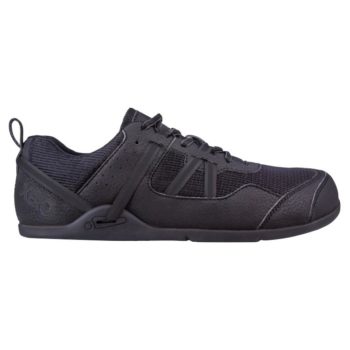
- – The Prio is the shoe Xero recommends for overall fitness. Prio stands for proPRIOception, which means it allows your feet to move and feel as nature intended. Whether you’re out on a run, trying out a new trail, hitting the gym, or just walking around town, the Correct Toes Approved™ Prio can be your go-to shoe for just about anything. The sole starts at 5.5 mm, but comes with a 2 mm removable insole. Please see our shoe review.
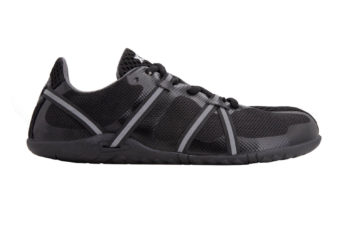
- – The Speed Force was made for racing and is meant for speed, however it can be worn for much more. The Speed Force is super lightweight, wtih a men’s 9 weighing only 5.8 ounces. The zero-drop, with a thin and flexible, yet grippy 4.5 mm FeelTrue® rubber sole that is better for lateral traction because the sole wraps up slightly on the sides of the shoe. The Speed Force also comes with a 2 mm removable insole.
Vivobarefoot
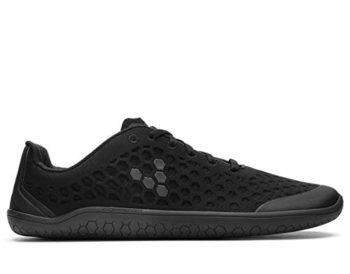
- – The Stealth II is one of Vivobarefoot’s best styles for athletic performance. The durable hex-mesh upper is constructed with support and stretch zones to assure responsive foot control and an adaptive fit. The Stealth II features a 3 mm barefoot sole for maximum sensory feedback and minimum interference. In terms of cross training, the Stealth II is great to use once the athlete has transitioned to minimalist footwear, as it really provides great foot placement on the ground with remarkable ground-feel. This helps with balance and sensory feedback.
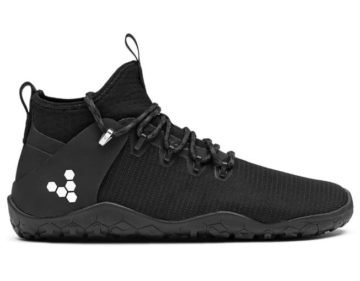
- – The Magna Trail is a minimalist hiking shoe designed to seamlessly transition from concrete to trails. It features a natural foot shape design that will accommodate Correct Toes for some and utilizes Vivobarefoot’s Firm Ground outsole, with low profile lugs that offer good traction on a variety of surfaces. The outsole generously wraps up around the edge of the shoe providing extra support for lateral movements. The Magna Trail works best for outdoor basketball on an asphalt court as opposed to an indoor gym. Additionally, as one of the few mid-top/hi-top minimalist shoes, the Magna Trail aesthetically most resembles a basketball shoe. Please see our shoe review.
Shoes from Popular Brands
These brands unfortunately do not have the features Correct Toes looks for in a natural, healthy, foot-shaped shoe, and often represent everything Correct Toes is trying to change about the shoe industry. Most of them have toe boxes that are far too narrow, unnecessary and injurious heel elevations and toe springs, and rigid, cast-like soles. However, we understand there aren’t any ideal athletic shoes out there that have been able to merge the concepts of natural foot health with basketball performance. After speaking with several major brand customer service representatives, and special thanks to Dimitrije, head of basketball research at RunRepeat.com, these shoes were the best options Correct Toes could come up with from 5 of the most popular basketball shoe brands. These shoes are at least hopefully lightweight, low-profile, slightly wider, and designed for agility.
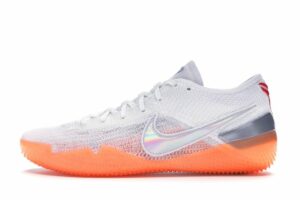
New Balance – Minimus Trainer
Nike – Kobe AD NXT 360
Under Armour – Curry 6
Adidas – Dame 5
Converse – All Star Pro BB
Common Basketball Injuries and Conservative Treatment
Written by: Dr. Andrew Wojciechowski, ND
If you’re seeking more individualized foot health care and would like to work with Dr. Andrew directly, you can schedule at Northwest Foot and Ankle.
Schedule a virtual remote consultation with Dr. Andrew Wojciechowksi, ND.
Schedule an in-person appointment with Dr. Andrew Wojciechowski, ND at Northwest Foot & Ankle in Portland, OR.


